WHO TALKS TO WHOM: INTRA- AND INTERDISCIPLINARY COMMUNICATION OF ECONOMICS JOURNALS
A talk by Jeffrey Pfeffer currently touring the world cites some stats from Who Talks to Whom? Intra- and Interdisciplinary Communication of Economics Journals, a 2002 paper by Rik Pieters and Hans Baumgartner:
” * 90% of citations in economics is intradisciplinary
* The 5 economics journals studied made no citations to management, marketing, anthropology, or psychology journals
* Economics is cited 4333 times by its sister disciplines between 1995 & 1997, while economics cites other disciplines (mostly finance at 79%) 601 times”
ABSTRACT of Pieters and Baumgartner:
Citation patterns between 42 journals in economics from 1995 to 1997 are examined, plus between economics and anthropology, political science, psychology, sociology and five business disciplines. Building on social network theory, we identify a hierarchical organization of journals in economics and seven journal clusters. Major citation flows are found from all areas of economics to the general interest and theory and method clusters, but not the other way around. Economics emerges as a significant source of interdisciplinary knowledge for the other social sciences and business. However, no area of economics appears to build substantially on insights from its sister disciplines.
Also note this recent piece in Foreign Policy by Moisés NaÃm suggest economics is overly inward gazing given its limited ability to preform its bread and butter task of forecasting the future(a point also made in a forthcoming book by Nassim Taleb).
AUTHORS:
Jeffrey Pfeffer
Rik Pieters
Hans Baumgartner
R STATISTICAL LANGUAGE MULTI-SITE SEARCH
Image (C) R Foundation, from http://www.r-project.org
Decision researchers and fellow bloggers Jon Baron and Andrew Gelman are big fans and supporters of the R project for statistical computing.
Searching for information on R can be difficult (though Baron’s R search tool is a great help), so DSN has put together a search widget that only queries R sites:
R Statistical Language Multi-Site Search
Simply click the image above to search and see the results from many sites. Sites searched include:
finzi.psych.upenn.edu
cran.r-project.org
wiki.r-project.org
lib.stat.cmu.edu/S
lib.stat.cmu.edu/R
tolstoy.newcastle.edu.au/R
and DSN welcomes suggestions for additions and deletions.
Filed in
Books
 Subscribe
Subscribe to Decision Science News by Email (one email per week, easy unsubscribe)
INFORMATION SCIENCE
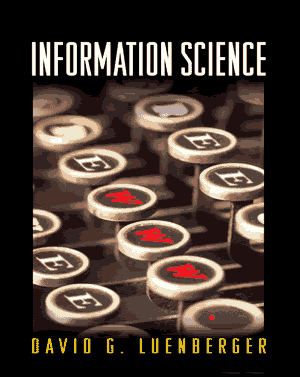
When DSN was visiting Stanford’s Department of Management Science and Engineering in the late 90s, it was called “Engineering-Economic Systems and Operations Research”. A change for the better, no? One thing that hasn’t changed is the excellence of the people there.
We just got our copy David Luenberger’s new Information Science. Not only is it a handsome book (big but not heavy, with cottony paper), it’s like an entire college education on a field you never knew existed, looking at everything from file compression to marketing to microeconomics through one beautiful framework set forth by Claude Shannon in 1949. It includes a nice Shannon quote, from 1953:
The first [method] I might speak about is simplification. Suppose that you are given a problem to solve, I don’t care what kind of problemâa machine to design, or a physical theory to develop, or a mathematical theorem to prove or something of that kindâprobably a very powerful approach to this is to attempt to eliminate everything from the problem except the essentials; that is, cut it down to size. Almost every problem that you come across is befuddled with all kinds of extraneous data of one sort or another; and if you can bring this problem down into the main issues, you can see more clearly what you are trying to do an perhaps find a solution. Now in so doing you may have stripped away the problem you’re after. You may have simplified it to the point that it doesn’t even resemble the problem that you started with; but very often if you can solve this simple problem, you can add refinements to the solution of this until you get back to the solution of the one you started with.
Luenberger comments “Shannon’s approach of abstraction to an essence should become clear as we study his contributions throughout this text. His work is a testament to the power of the method.”
REFERENCE:
Shannon, Claude E. Creative Thinking. Mathematical Sciences Research Center, AT&T, 1993.
Filed in
Books
 Subscribe
Subscribe to Decision Science News by Email (one email per week, easy unsubscribe)
WEB EXPERIMENTS MUST BE GOOD WEB SITES
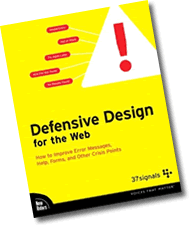
To do a good web-based experiment, a researcher needs to keep the drop-out rate as low as possible. Good Web design is key to getting people to take experiments seriously and to finish what they start. By encouraging good coding practices, it also improves cross-platform and cross-browser performance.
DSN likes the simple heuristics-based approach of the book Defensive Design for the Web by 37signals, Matthew Linderman, and Jason Fried, which contains 40 practical guidelines for how to improve a site.
VISUAL LEAST SQUARES

(Click on the image to interact with the tool)
Back when the DSN editor was a student at Chicago, he learned Statistics and History of Statistics from Steve Stigler, who proposed a visual demonstration of least squares regression. Together they came out with a now-obsolete Mac version. Today, DSN is proud to announce a version that will run on any browser that does Flash.
The demonstration should be self-explanatory to anyone who understands simple regression, and if not, might suffice as a tutor. And if not, there is always the linear regression article in Wikipedia.
FAQ
Can I use this to teach my class?
Yes, and please let us know how it goes! A benefit of the web-based version is that it can be reached from any place with a Web connection. This program is made available through a Creative Commons License (Attribution-NonCommercial-NoDerivs) which means that you are welcome to use it for non-commercial purposes.
Can you make a convenient URL for this tool?
Yes, how about http://www.dangoldstein.com/regression.html
RUNAWAY POPULARITY EFFECTS IN MUSIC DOWNLOADING
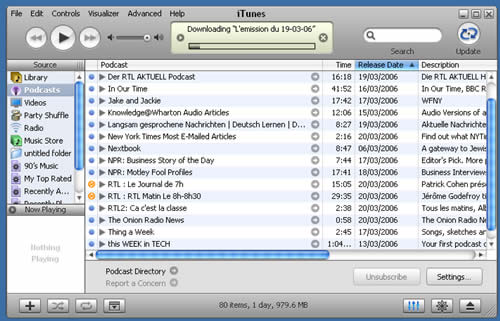
Back when DSN was headquatered at Columbia, it helped out a bit with Matt Salganik and Duncan Watts’ project on runaway popularity effects in music downloading. The paper is now out in Science (vol 311, page 854): Experimental Study of Inequality and Unpredictability in an Artificial Cultural Market.
It’s a fascinating look at how popularity breeds popularity in a controlled but realistic setting with an enormous sample size of over 14,000 people. Have a read.
Quote
“One explanation for the observed inequality of outcomes [in cultural markets] is that the mapping from quality to success is convex (i.e., differences in quality correspond to larger differences in success), leading to what has been called the superstar effect, or winner-take-all markets. Because models of this type, however, assume that the mapping from quality to success is deterministic and that quality is known, they cannot account for the observed unpredictability of outcomes. An alternate explanation that accounts for both inequality and unpredictability asserts that individuals do not make decisions independently, but rather are influenced by the behavior of others”
Books by Duncan Watts
* Small Worlds
* Six Degrees
ANNOUNCING THE JUDGMENT AND DECISION MAKING JOURNAL
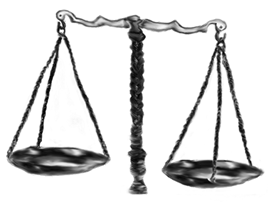
Jon Baron has announced A new online journal for judgment and decision making.
A new journal is always a risk. If people will read it and cite it, submitting there now is wise. If nobody will read it or cite it, submitting there now is foolish.
In an exclusive interview, DSN asked Jon Baron the following questions :
Before a journal has a reputation, what should one do? Submit early? Or wait and see? If you submit early, you may have good chances of getting in, and your article may get great exposure if the journal succeeds, but if the journal fails, your article may slip into oblivion. If you wait and see before submitting, and others do too, the journal will surely fail.
Should a pre-tenure academic who needs articles in certain reputation journals publish in a new journal? Or just senior people who care more about exposure than building a tenure case.
What makes this journal a safe bet? I believe that unlike most journals, this one will be reachable by search engines, so articles there may get more exposure than one in a traditional journal.
Jon Baron replies:
“I think there are a few answers about “why submit,” and I didn’t want to harp on some of them in a general post sent everywhere.
1. As you point out, this gets lots of exposure.
2. By going after short articles, we are looking for good ones that get rejected from Psychological Science, of which there are
many. There is no other outlet for these. Most main-line journals do not take short ones, e.g., with one experiment. Moreover, the Psychological Science review process has become slow, so it is a bigger risk to send things there, and you might want to try us first. (I don’t know if you should say the last thing. Say it if you agree with it, but perhaps don’t attribute it to me. It is, however, true.)
3. There are successful on-line journals of societies, e.g., the Journal of Vision (published by ARVO).
4. This seems to have a lot of support, as indicated by those who agreed to be on the board.
5. The usual journals (OBHDP and JBDM) have very low penetration and citation rates. This is, I think, largely because most institutional libraries do not get them. As a result, they don’t really count as “prestigious” when people come up for tenure. So there is little to lose. See the proposal for documentation.
In sum, yes, this is a risk, but I’m really not sure it is a very big risk. A publication in a refereed journal is, after all, a publication in a refereed journal. And our rejection rate will, I think, be high.”
Filed in
Conferences
 Subscribe
Subscribe to Decision Science News by Email (one email per week, easy unsubscribe)
STANFORD SUMMER SCHOOL IN NEUROECONOMICS 2006
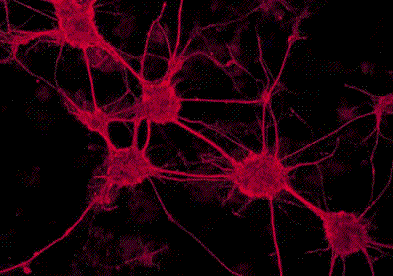
This year’s Summer School in Neuroeconomics will take place July 17 – July 28, 2006 at Stanford. The application deadline is March 15th, 2006, so you’d better hurry.
The organizers inlcude Colin Camerer (Caltech), Paul Glimcher (NYU), and Antonio Rangel (Stanford). The aim of the Stanford Summer School in Neuroeconomics is to provide an introduction to the new field of neuroeconomics to graduate students and post-docs in neuroscience, psychology, and economics.
Part of the meeting will focus on “computational neuroeconomics”, which provides the unifying framework for the field, and a common language for the three related fields. This part of the program describes state-of-the art models of how the brain makes economic decisions (Which variables are computed? How are they computed? How do they interact with each other to generate choices?) The other part of the program covers several experimental techniques and their applications to neuroeconomics. The program also includes daily research talks by leading scholars in the field and a student project.
Graduate students and post-doctoral scholars in neuroscience, psychology, and economics are invited to apply. Those interested in attending the course should send the materials listed below by e-mail no later MARCH 15, 2006. 40 applicants will be selected and notified by email in mid-April, 2006.
For more information visit http://neuroeconomics-summerschool.stanford.edu/
THE RECOGNITION HEURISTIC ON ESPN.COM

Bill Simmons just ran a nice interview with Malcolm Gladwell, in which he draws on a recognition heuristic example of when more knowledge is worse than less.
“Simmons: While we’re on the subject of the Knicks, please enlighten the readers on your convoluted theory about why Isiah Thomas is a terrible GM, because he’s one of my favorites.
Gladwell: Here’s the real question. If I was GM of the Knicks, would I be doing a better job of managing the team than Thomas? I believe, somewhat immodestly, that the answer is yes. And I say this even though it is abundantly clear that Thomas knows several thousand times more about basketball than I do. I’ve never picked up a basketball. I couldn’t diagram a play to save my life. I would put my level of basketball knowledge, among hard core fans, in the 25th percentile.
So why do I think I would be better? There’s a famous experiment done by a wonderful psychologist at Columbia University named Dan Goldstein. He goes to a class of American college students and asks them which city they think is bigger — San Antonio or San Diego. The students are divided. Then he goes to an equivalent class of German college students and asks the same question. This time the class votes overwhelmingly for San Diego. The right answer? San Diego. So the Germans are smarter, at least on this question, than the American kids. But that’s not because they know more about American geography. It’s because they know less. They’ve never heard of San Antonio. But they’ve heard of San Diego and using only that rule of thumb, they figure San Diego must be bigger. The American students know way more. They know all about San Antonio. They know it’s in Texas and that Texas is booming. They know it has a pro basketball team, so it must be a pretty big market. Some of them may have been in San Antonio and taken forever to drive from one side of town to another — and that, and a thousand other stray facts about Texas and San Antonio, have the effect of muddling their judgment and preventing them from getting the right answer.
I’d be the equivalent of the German student. I know nothing about basketball, so I’d make only the safest, most obvious decisions. ”
“The point is that knowledge and the ability to make a good decision correlate only sporadically, and there are plenty of times when knowledge gets in the way of judgement.”
“By the way, while we’re on this topic, let’s play a real world application of this. Let’s say I’m so dumb about basketball that all I know is that the best college programs in the country are Duke and UConn, and so as a GM my rule is only draft and/or trade for the first and second team players, in any given year, from those two schools. So I fire all my scouts….[Describes the team he’d end up with]…Is that the best team in the league? No. It is better than the Knicks? Absolutely. The point is that clinging to a very simple rule of thumb here — that doesn’t require knowing much about basketball — can leave you looking pretty smart.”
NOTE
We asked Germans and Americans to infer which of San Diego or San Antonio has a larger population, and scored their responses, in 1994. The populations of the cities were:
In 1994 as today, San Diego is bigger than San Antonio by city-limits measures and by metro area measures. Currently, the San Diego metro area has a population of 2.9 million (city limits 1.26), while that of San Antonio is 1.8 million (city limits 1.24 source, source). In an exciting development, by city-limits measures, San Antonio might well pass San Diego in the years to come (though by metro areas, San Antonio would need to gain over 1 million people). It is this explosive growth in the southwest that some of the Americans may have been factoring into their inference that San Antonio was larger in 1994. Many of the Germans had never heard of San Antonio, and none thought it was larger.
One nice thing about the recognition heuristic is that it predicts when people will get the right answer and when they will get the wrong one based on the state of the world, the question asked, and the state of memory. It is the case in a great many domains that recognized objects are larger than unrecognized ones. The recognition heuristic predicts when people who know less can be more accurate than those who know more on particular items.
For aficionados of this sort of thing, the relationship between recognition and the thing predicted (here, population) is called the recognition validity of a domain. Much more detail is found in the recognition heuristic article and the book Simple Heuristics that Make Us Smart.
AN EASY MANAGEMENT MISTAKE TO MAKE

Regression to the mean is like the cicada, just as you forget about it, you hear its buzz. The man who taught DSN the history of statistics, Prof. Steve Stigler of the University of Chicago, said this of it:
“Galton’s completion of his discovery of this phenomenon [regression to the mean] in the 1880s should rank should rank with the greatest individual events in the history of scienceâat a level with William Harvey’s discovery of the circulation of blood and with Isaac Newton’s of the separation of light.”
A nice example of a manager not appreciating regression to the mean is found in Tversky & Kahneman’s famous 1974 Science article:
“The failure to recognize the import of regression can have pernicious consequences, as illustrated by the following observation. In a discussion of flight training, experienced instructors noted that praise for an exceptionally smooth landing is typically followed by a poorer landing on the next try, while harsh criticism after a rough landing is usually followed by an improvement on the next try. The instructors concluded that verbal rewards are detrimental to learning, while verbal punishments are beneficial, contrary to accepted psychological doctrine. This conclusion is unwarranted because of the presence of regression toward the mean. As in other cases of repeated examination, an improvement will usually follow a poor performance and a deterioration will usually follow an outstanding performance, even if the instructor does not respond to the trainee’s achievement on the first attempt. Because the instructors had praised their trainees after good landings and admonished them after poor ones, they reached the erroneous and potentially harmful conclusion that punishment is more effective than reward.”
Thanks for Ralph Hertwig of Basel for the reference.
Reference:
Tversky, A., & Kahneman, D. Judgment under uncertainty: Heuristics and biases. Science, 1974, 185, 1124-1131.
 Subscribe to Decision Science News by Email (one email per week, easy unsubscribe)
Subscribe to Decision Science News by Email (one email per week, easy unsubscribe)













